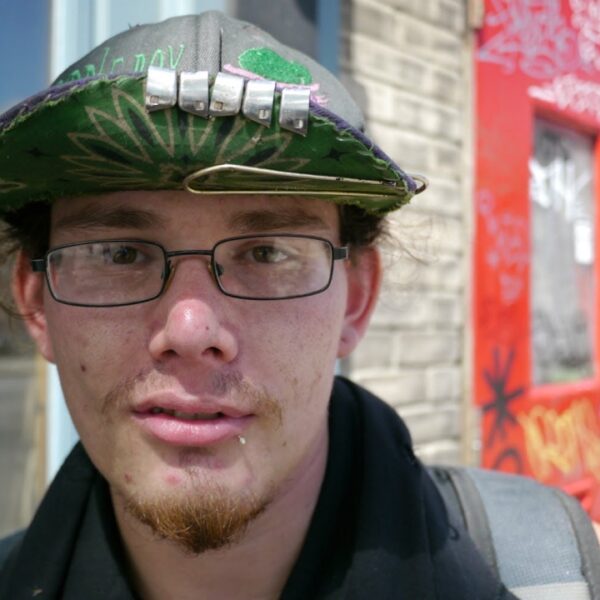Quantifying homelessness is tricky, but where the PIT count lacks, other, lesser-known organizations are filling in those gaps and turning what used to just be a snapshot of homelessness into a full-on panoramic picture.
Now, a study published by the University of Chicago projects that at least 3.5 million young adults between the ages of 18 and 25 become homeless every year in the United States of America. This amounts to one in 10 members of the upcoming generation, the future leaders of our world.
Quantifying Homelessness: Why is This So Important?
While many voters are rightly confused about homelessness, recent surveys show that most believe it is a top issue that needs to be addressed.
As unsheltered homelessness (the most visible form of homelessness) trends upward, people – politicians, voters, and legislators alike – seek answers. However, it is nearly impossible to address a situation that’s severely lacking in data.
To reduce homelessness, we must first identify its root causes. But how can we do that if we can’t even identify who is or isn’t homeless to begin with?
For too many years, we have relied upon the national Point in Time Count to estimate how many people endure homelessness per night. This tally is taken mainly by volunteers who seek out only visibly homeless people and counts provided by emergency shelters.
The reason this calculation is known for being a drastic undercount is that the PIT count often misses:
- Homeless people living in hotels or motels
- Homeless children who might be living doubled up (particularly those under the age of six)
- Homeless school records
- Unsheltered people who don’t fit the description of being visibly homeless
- Unsheltered people who are living underground or in the confines of the sewer system
- People who are hiding their homelessness accidentally or by necessity
*It should be noted that homelessness in tribal Indigenous territories rarely shows up in any of this data, through the PIT count or otherwise.
In addition to missing some of the critical components of homelessness, the PIT count is also a drastic undercount because it shows statistics based on “any given night.” In contrast, most statistical information is relayed on a per-year basis.
For example, the median American income is approximately $44,225, according to World Population Review. This is conveyed as an annual salary. Nobody ever says, “On any given day, the average American makes $220.”
That statement, while accurate, doesn’t tell the full story. To get a better perspective of American finances, an annual estimate is required. The same is true regarding American homelessness.
Thanks to New, Sophisticated Technology, Annual Quantitative Homeless Data is Emerging
Data gathering, in general, has become a more advanced field. As Brookings points out, the emergence of artificial intelligence is changing how we gather and analyze data, creating more insight than ever before, at least in theory.
In practice, this sophisticated tech has primarily been applied to things like tracking consumer spending habits and other comparable chores that will undoubtedly make rich people richer. This type of data gathering is hardly described as philanthropic and could even be exploitative. There has been very little advancement in gathering data that helps the poorest members of society – at least, not until now.
In November 2017, researchers from Chaplin Hall at the University of Chicago produced a groundbreaking new report called “Voices of Youth Count.”
This report attempts to quantify youth homelessness on a much larger scale than the PIT count. Using a nationwide survey, UChicago researchers were able to extract vital information from tens of thousands of participants whose households consisted of American youths. The survey, in total, took the views expressed by more than 26,000 Americans and applied them to a national scale to effectively quantify youth homelessness.
The results were shocking.
According to the Voices of Youth Count Analysis, 3.5 million Young Adults Become Homeless Each Year
As the story unfolds, it is revealed that one out of every ten people between the ages of 18 and 25 are thrust into the harrowing state of homelessness each year. They are not always on street corners or pitching tents at intersections. Nearly 50% spend their nights surfing from sofa to sofa, an endless ocean, its undercurrents felt but unseen.
700,000 Teenagers Become Homeless Annually
In addition to the 3.5 million houseless young adults, approximately 700,000 teenagers between the ages of 13 and 17 are dealing with similar issues.
Our future leaders are swept up in this tide. This number reflects one in 30 teenagers and is comparable to the one in 30 school-aged children caught up in the same struggle. Issues such as abuse, neglect, and getting kicked out or running away are seriously underreported and worthy of separate studies.
The Longer These Young Adults Stay on the Streets, the More Difficult Escaping Homelessness Becomes
The National Library of Medicine published an eye-opening report titled “Dynamics of Homelessness,” which describes the multi-pronged problem of exiting the homeless industrial complex. To quote that paper directly, “The tighter the housing market, the greater the amount of economic and personal resources one must have to remain secure.” The report then describes homelessness as a “complicated phenomenon” wherein multiple characteristics coincide.
As you can see from the researcher’s observation above, people lacking personal and economic resources have a much harder time keeping their housing situations secure. For this reason and many more, youths who experience homelessness are vulnerable to falling into it repeatedly, shifting from transitional homelessness (which happens suddenly and unexpectedly) to episodic homelessness (which happens more than once).
Talk to Your Representatives about Building a Brighter Future for our Youth by Adding Affordable Housing to the Infrastructure
Every time the issue of affordable housing is brought to the polls, please think of the 3.5 million young Americans being forced to endure homelessness due in large part to a tighter housing market and act accordingly. Talk to your representatives about their plans to build a brighter future for our youth by making housing a human right.













